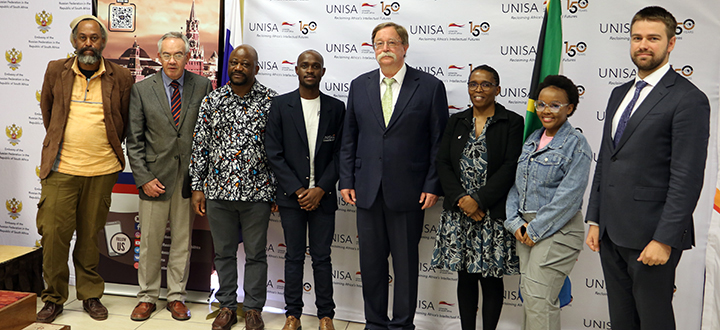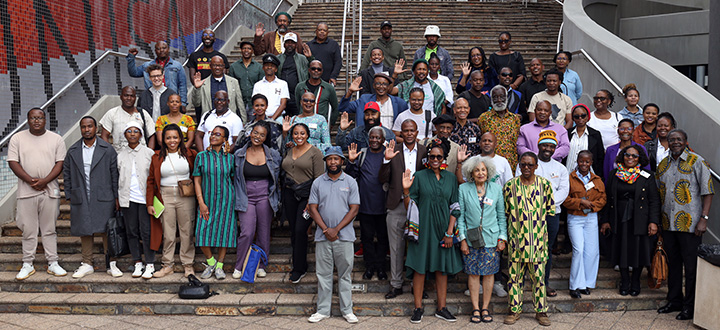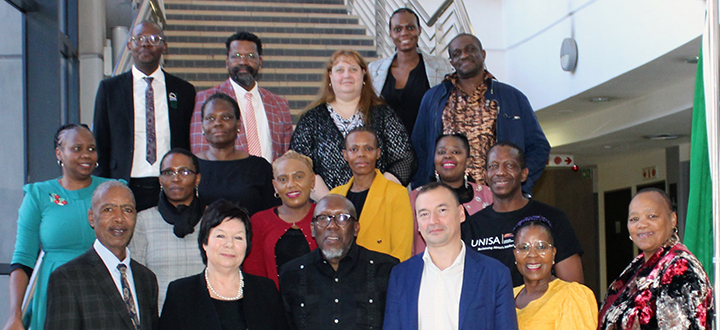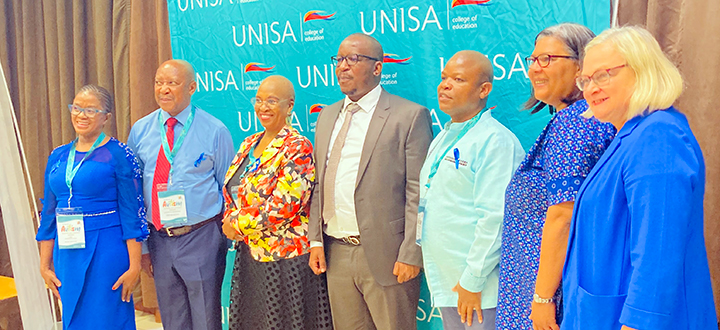College of Science, Engineering & Technology
Nano maestro published in authoritative journal

Professor Eno Effiong Ebenso
Professor Eno Effiong Ebenso of the College of Science, Engineering and Technology (CSET) recently published a review article, entitled “Quantitative structure activity relationship and artificial neural network as vital tools in predicting coordination capabilities of organic compounds with metal surface: a review” in Coordination Chemistry Reviews, a journal that currently has an impact factor of 22.315.
On 30 June 2021, Clarivate released the 2021 update of its annual Journal Citation Reports (JCR), which indicated changes to citation indices and impact factors of journals. The journal Coordination Chemistry Reviews showed a significant increase from 15.367 in 2020 to 22.315 in 2021. The JCR data are based on 2020 data that were compiled from the core collection of journal articles, books and conference proceedings of the Web of Science, the world’s largest publisher-neutral global citation database.
The yearly JCR releases allow the research community to evaluate the world’s high-quality academic journals using a range of indicators, descriptive data and visualisations. Additionally, the reports are used by academic publishers to evaluate the impact of their journals relative to their field and to promote them to the research community.
“The review article discusses different computational and experimental methods used to describe the nature and effectiveness of metal-inhibitor bonds,” says Ebenso. “Quantitative structure-activity relationship (QSAR) is listed as one of the most recent and reliable computational methods used to describe metal-inhibitor coordination, leading to corrosion inhibition. The quest for the design of new, high-performance environmentally benign compounds that can effectively impede corrosion without excessive large-scale experimental trials has heightened research interest in molecular structure-corrosion inhibition relationship. This review article presents the most comprehensive and detailed summary of previous works on the use of QSARs and artificial neural networks (ANNs) as predictive tools for metal-organic compound coordination towards corrosion inhibition.” The review article is currently in press.
Ebenso is an NRF B-rated researcher who has over 22 000 Google Scholar citations and an H index of 82, making him one of the most highly cited scholars at Unisa. On the Scopus search engine, he has an H-index of 68, based on over 15 000 citations. According to the Elsevier SciVal Insights Report (2010–2015), Prof Ebenso’s citation impact is 10% above the world average. He is the second most prolific author in the field of corrosion inhibition worldwide and his publications are the fifth most downloaded globally in the field of corrosion inhibition.
Ebenso recently appeared in the top 10 list of prominent South African nanotechnology researchers/authors over a 20-year period (2000–2019), according to the South African Institute of Physics. He is also listed among the top 2% most-cited scientists in the world, according to Stanford University, together with the publishing house Elsevier and SciTech Strategies.
“I am really humbled by all my achievements,” says Ebenso. He is currently involved in the mentorship of emerging researchers and the supervision of masters and doctoral students at the Institute for Nanotechnology and Water Sustainability (iNanoWS) at CSET.
Click here to view Prof Ebenso’s review article.
*Compiled by: Dr Nozipho Gumbi, Acting Communication and Marketing Specialist, CSET
Publish date: 2021-07-07 00:00:00.0

 Unisa's student leadership engage with Russian ambassador
Unisa's student leadership engage with Russian ambassador
 Re-igniting and re-imagining Pan Africanism, Afrocentricity and Afrofuturism in the 21st century
Re-igniting and re-imagining Pan Africanism, Afrocentricity and Afrofuturism in the 21st century
 Unisa and Russian State University for the Humanities explore collaborative opportunities
Unisa and Russian State University for the Humanities explore collaborative opportunities
 Young Unisa science stars join elite Lindau Nobel Laureate group
Young Unisa science stars join elite Lindau Nobel Laureate group
 Education MEC addresses Unisa autism seminar
Education MEC addresses Unisa autism seminar